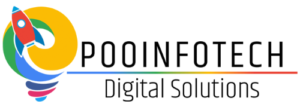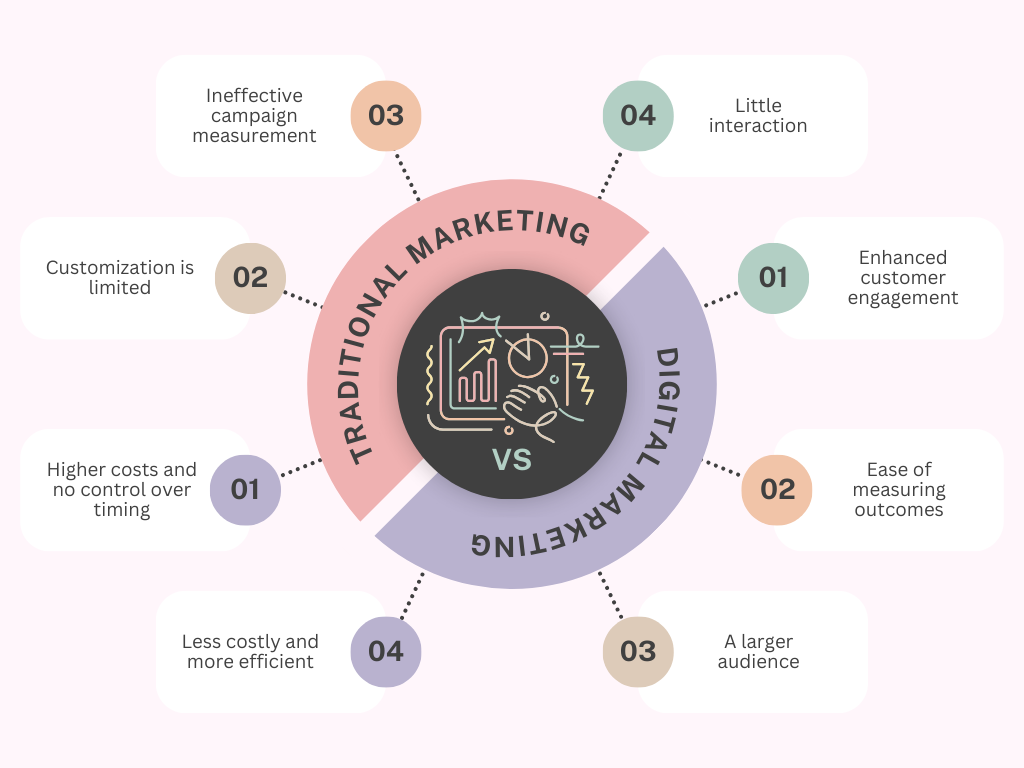
Introduction
In today’s fast-paced world, choosing between digital marketing and traditional marketing has become an essential part of any business strategy. With so many different methods and platforms, it can be difficult to decide which approach to use. Should you go digital, stick to traditional methods, or use a combination of both? This blog will explain both digital marketing and traditional marketing, their benefits and effective It is intended to help you understand how to use it. Dive into and explore the world of marketing in an easy-to-understand and practical way tailored to your business needs.
What is traditional marketing?
Traditional marketing refers to techniques that have been used for decades to reach consumers. These are techniques that you’re probably familiar with because they’ve been around for a long time. Let’s look at some common forms of traditional marketing:
1. Print Advertising:
Print advertising includes newspapers, magazines, brochures, and flyers. This method is great for reaching local audiences and people who prefer reading physical materials.
2. Radio Advertising:
This includes television and radio advertising. Broadcast advertising has a wide reach and is therefore very effective, especially for companies that want to build a strong brand presence.
3. Direct Mail:
Direct mail involves sending physical items like postcards, catalogs, and letters straight to potential customers. This is a personal way of reaching out to people and can be used very specifically.
4. Outdoor advertising:
Billboards, banners, and posters fall under outdoor advertising. These are usually installed in high traffic areas to attract the attention of passersby.
5. Telemarketing
This includes telephone marketing and SMS marketing. This is a direct way to reach your customers, but it can get messy if not done correctly.

What is digital marketing?
Digital marketing, on the other hand, uses the Internet and electronic devices to reach consumers. This is a new form of marketing, but it has quickly become essential for businesses of all sizes. Given below are some common types of digital marketing.
1. Social Media Marketing :
This is the use of platforms such as Facebook, Instagram, Twitter, and LinkedIn to reach and engage with your audience. Social media marketing is great for increasing brand awareness and engaging with your customers.
2. Search Engine Optimization (SEO)
SEO involves improving a website to get it to rank higher on search engine results pages (SERPs). This means your website will receive more organic (free) traffic from search engines like Google.
3. Content Marketing
Content marketing is the creation of valuable content (blogs, videos, infographics, etc.) that attracts and engages your audience. It’s about providing information that helps solve a problem or entertains your audience.
4. Email Marketing
Email marketing involves sending newsletters, offers, and other types of emails to subscribers. This is a great way to stay in touch with your customers and promote your products and services.
5. Pay-Per-Click (PPC) Advertising
PPC is when you place an ad on a search engine or social media platform and pay a fee each time someone clicks on your ad. This is a simple way to boost traffic to your website.
6. Affiliate Marketing
Here, you collaborate with other companies and influencers to promote your products. They earn a commission for each sale generated through their referrals.
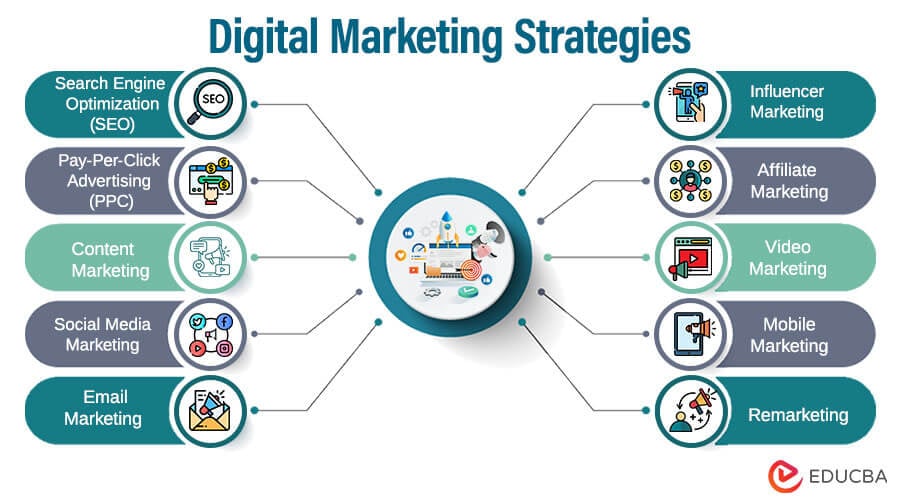
Digital Marketing vs Traditional Marketing
Advantages of Traditional Marketing
Traditional marketing methods have been around for a long time and still hold their place in today’s world. The advantages of traditional marketing are:
1. Tangibility
One of the biggest advantages of traditional marketing is its tangibility. Print ads, direct mail, and outdoor ads are physical and can be saved for future reference.
2. Broad Reach
Traditional marketing can reach a wide audience, especially through television and radio advertising. These methods will help you build brand awareness quickly.
3. Local Targeting
For businesses focusing on local customers, traditional marketing methods like placing ads in local newspapers and setting up billboards in strategic spots can be highly effective.
4. Trustworthiness
Many people still trust traditional forms of marketing over digital advertising. Advertising your company on television and in reputable magazines can increase your brand’s credibility.
Benefits of Digital Marketing
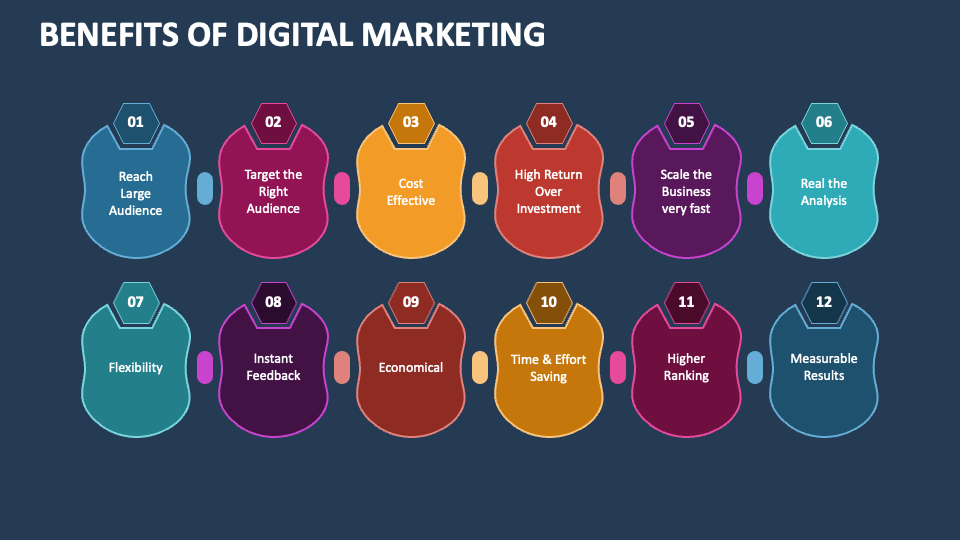
Digital marketing has grown rapidly due to the increased use of the Internet and mobile devices. The advantages of digital marketing are:
1. Cost-effective
Digital marketing is often cheaper than traditional marketing methods. Small businesses can start with a small budget and gradually expand as they see results.
2. Measurable Results
One of the biggest benefits of digital marketing is that results can be tracked and measured in real time. See how many people visit your website, click on your ads, and interact with your social media posts.
3. Targeted Advertising
Digital marketing allows for targeted advertising. You can target your ads based on demographics, interests, behavior, and more to ensure your message reaches the right people.
4. Global Reach
Digital marketing enables you to connect with audiences across the globe. Your website, social media profiles, and online ads are accessible to anyone with an internet connection.
5. Engagement
With digital marketing, you can engage in conversations with your audience. You can interact with your customers, respond to their comments, and build relationships through social media.
Challenges of Traditional Marketing
Although traditional marketing has its benefits, it also has some challenges.
1 . Cost
Traditional marketing methods can be expensive, especially for small businesses. Television commercials, radio spots, and print ads often require large budgets.
2. Limited Interaction
Traditional marketing is typically a one-way communication method. Not being able to interact directly with your audience makes it difficult to build relationships.
3. Difficulties in Measuring
Tracking how well traditional marketing campaigns work can be tricky. It’s difficult to track how many people take action after seeing a billboard or hearing a radio ad.
4. Decreasing Reach
With the advent of digital media, fewer and fewer people are using traditional media. As more people turn to the Internet for information and entertainment, viewership of newspapers, magazines, and even television is decreasing.
Digital Marketing Challenges
Digital marketing is not without its challenges.
1. Competition:
The digital space is crowded and it can be difficult to stand out from the crowd. Competition for attention is fierce, and creating content that grabs attention takes effort.
2. Constant Change:
The digital environment is constantly changing. New platforms emerge, algorithms are updated, and trends change. Staying on top of these changes means you have to keep learning and adapting all the time.
3. Technical Skills:
Digital marketing often requires a certain level of technical skill. There may be a learning curve to understand how to use the various tools, analyze data, and optimize your campaigns.
4. Security and Privacy:
In digital marketing, there are concerns about data security and privacy. It’s important to ensure that customer data is protected and regulations such as GDPR are complied with.
Choosing between digital marketing and traditional marketing
Deciding between digital marketing and traditional marketing comes down to what you want to achieve for your business, who you’re trying to reach, and how much you can spend. Factors to consider are:
1. Understanding your audience
Understanding your audience is important. where do they spend their time? Do you prefer reading newspapers or scrolling through Instagram? Knowing this will help you choose the right channels.
2. Define your goals
What are your marketing goals? If you want to quickly increase brand awareness, traditional methods such as television advertising can be effective. If you want to increase instant sales and track results, digital marketing could be the way to go.
3. Budget
Consider your budget. Traditional marketing methods can be costly, so if you’re on a tight budget, digital marketing may offer a more cost-effective option.
4. Integrate both methods
You don’t have to pick just one option. Many businesses have found success by integrating digital and traditional marketing. For example, you can run print ads that drive people to your website and social media profiles.
Successful examples of digital and traditional marketing
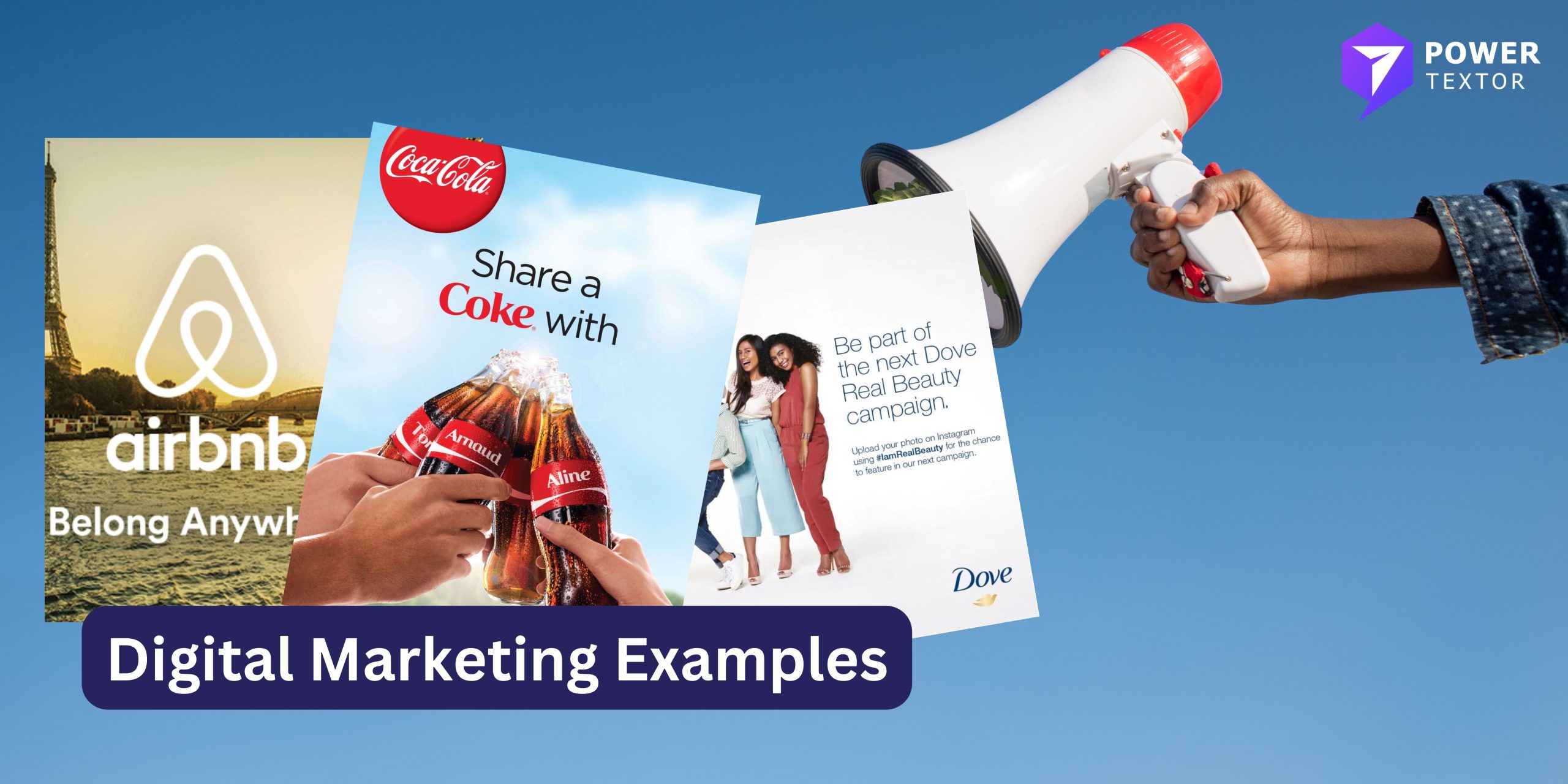
1. Coca-Cola
Coca-Cola is a great example of a brand that uses both digital and traditional marketing effectively. They run TV ads at major events, use billboards and have a strong social media presence. Their “Share a Coke” campaign is a great example of how they combine both methods. They started with personalized bottles (traditional marketing) and then encouraged people to share their experiences on social media (digital marketing).
2. Airbnb
Airbnb is an excellent example of a brand that successfully integrates both digital and traditional marketing techniques. They utilize TV commercials and outdoor advertising to reach a broad audience, while also maintaining a strong presence on social media and digital platforms. Their “Live There” campaign is a great example of how they combine both methods. They started with engaging TV commercials and billboards (traditional marketing) and then encouraged users to share their unique travel experiences on social media (digital marketing).
3. Dove
Dove is a standout example of a brand that effectively uses both digital and traditional marketing. They run TV ads that emphasize body positivity, use print ads in magazines, and have impactful billboards. Their “Real Beauty” campaign is a perfect illustration of their integrated approach. They began with empowering TV commercials and print ads (traditional marketing) and then amplified the message through social media campaigns and viral videos (digital marketing).
Future Trends in Marketing

As technology evolves, so does marketing. Future trends to watch include:
1. Artificial Intelligence (AI)
AI is becoming an important part of digital marketing. From chatbots to personalized recommendations, AI can help improve customer experiences and make marketing more efficient.
2. Video Content
Video content is increasing. Platforms like Tik-Tok, YouTube, and Instagram are driving this trend. Creating engaging video content allows you to reach and engage with your audience in a more dynamic way.
3. Voice Search
With the increasing use of smart speakers such as Alexa and Google Home, voice search optimization is becoming increasingly important. That means creating content that answers questions users might ask on their device.
4. Augmented Reality (AR)
AR is starting to make waves in marketing. Brands are using it to create interactive experiences for their customers. For example, furniture companies like IKEA offer an app that lets you see how a piece of furniture will look in your home before you buy it. This type of technology helps customers make better purchasing decisions and create memorable experiences with your brand.
5. Influencer Marketing
Influencer marketing is on the rise and is expected to become even more influential. By working with influencers with strong followings, brands can reach new audiences in a more authentic and relatable way. Influencers can create content that showcases products and services that are used on a daily basis, which is more effective than traditional advertising.
6. Personalization
Making your customers feel valued is all about personalization. Using data, you can tailor your marketing messages to individual customers and significantly increase engagement and conversion rates. This can be as simple as a personalized email greeting, or as advanced as product recommendations based on previous purchases or browsing behavior.
7. Sustainability and Social Responsibility
Consumers are becoming increasingly concerned about environmental and social issues. Brands that are committed to sustainability and social responsibility can build stronger relationships with their customers. This can be reflected in your marketing by highlighting environmentally friendly practices, supporting social causes, and being transparent about your business operations.
8. Data Protection
As digital marketing relies heavily on data, privacy concerns are on the rise. Brands need to be transparent about how they collect and use data and comply with regulations like GDPR. Building trust with your audience by respecting their privacy will help you stand out from your competitors.
Conclusion: Finding the right combination
Both digital marketing and traditional marketing have strengths and can be very effective when used correctly. The key is to understand your audience, set clear goals, and develop a strategy that gets the best of both worlds. By integrating digital and traditional methods, you can reach a wider audience, build stronger relationships with your customers, and achieve your business goals.
Marketing is always changing, so it’s crucial to keep up with the latest trends and best ways of doing things. Whether you’re a small business owner, a marketing professional, or just starting your career, the right mix of digital and traditional marketing will help you succeed in today’s competitive environment. can do.
Please note that there is no one-size-fits-all marketing approach. Try different strategies, measure your results, and be ready to adapt and evolve. With the right attitude and a balanced approach, you can navigate the complex world of marketing and have a huge impact on your business’s success.
So discover the possibilities of digital marketing and traditional marketing. Whether you’re designing eye-catching graphics, creating engaging content, or brainstorming your next big campaign, use your creativity and knowledge to drive marketing success
